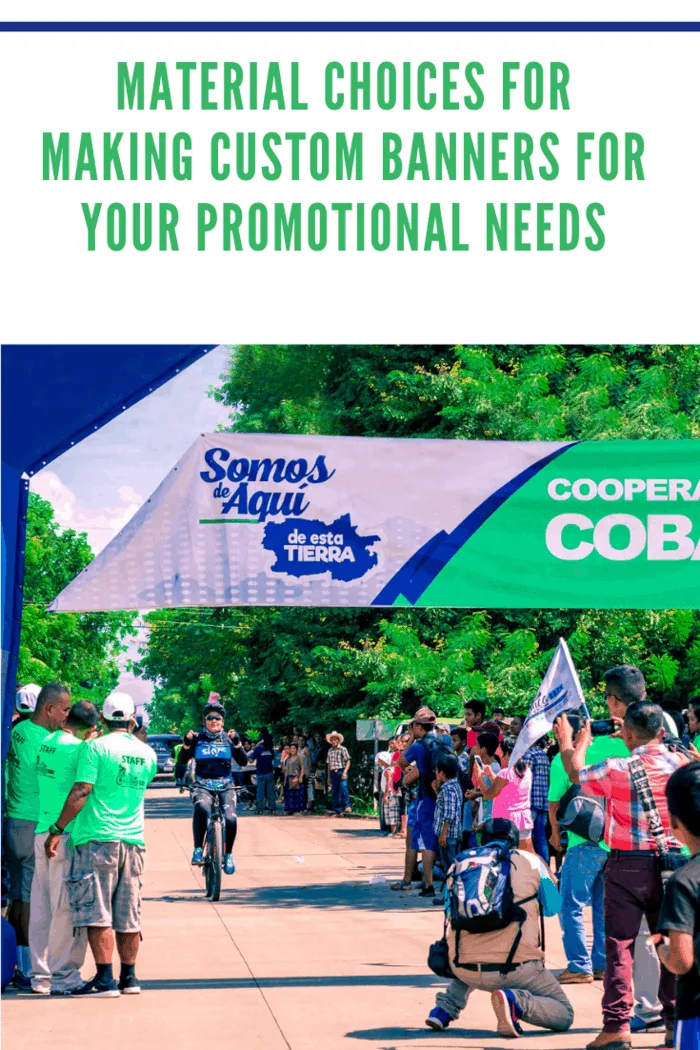Banners are the most authentic and simplest way of marketing, which can spread your business’s message to passer-by masses. A custom banner is a good example of large format advertising and can effectively represent your brand image in a classy way. These banners are made in different shapes and sizes, and there are also plenty of material choices for custom banners to create an impression and impact on the viewers. Studies have shown that custom banners can attract a huge target audience, and they must be functional and durable to give you an optimum return on investment.
In this article, we will discuss various materials used to print custom banners. Each of these materials has unique pros and cons, and you need to choose based on your fundamental objectives and preferences for the project.

Custom banner materials
-
Vinyl
Vinyl is one of the top choices in custom banner material, suitable for outdoor and indoor banners. This choice is highly cost-effective and so a budget-friendly option in banner printing. It can be used for printing big sized banners too, as of 15 feet x 50 feet without any seams. Usually, 13 oz scrim vinyl sheets are used for printing, fade-resistant, waterproof, and highly durable. You can print sharp and bright letters on various colors and images with clarity onto vinyl sheets. Installation of grommets and hems are also easy on vinyl sheets.
-
No curl vinyl
It is another variant of vinyl, where 14 oz vinyl sheets with a no-curl property are used for the premium banners and displays. No curl vinyl banners are ideal for indoor purposes like conventions, parties, indoor sporting events, and so on. The material is a standard upgrade from the basic 13oz vinyl, and the banners are digitally printed onto it in full color. To install the no-curl banners, you should avoid the usage of hems, and it is better to install grommets.
-
Mesh material
Mesh banners are also popular, which is printed onto 10 oz mesh vinyl sheets. It is a crisscross fiber configuration with wind-resistance properties. Even when installed outdoors in a strong windy region, mesh material will allow wind to pass through the fabric without lifting the banner. Unlike installing wing slits to the vinyl banners, mesh material will not tamper with the banner’s visual appeal. However, it is more expensive than the former materials.
-
Polyester fabric
Being another great choice in banner making, polyester can print both indoor and outdoor banners. Unlike the digital printing method on vinyl, polyester fabric banners are printed using the dye-sublimation method. It penetrates through the fabric and provides a high-quality both side print effect. Polyester is also a scratch-resistant material that can withstand mild weather conditions too.
-
Canvas
If you are printing banners for indoor use, canvas may be an ideal choice. The canvas banner’s texture is sturdy and can be used for high-end banner displays and used as backdrops at exhibition stalls. Canvas banners can be printed as big as 4.5 feet x 10 feet and can be fixed using hems, grommets, or pole pockets.

In Summary:
Remember, a wrong choice may reduce the effectiveness of your banner as a marketing tool.
So, considering all the above choices, you should make an appropriate choice of material based on the size, location of placement, and durability needs for your banner.
